Duck Dive: Penn State Nittany Lions Football 2025 Preview
Special thanks to Andrew Burd of the Nittany Blues podcast for joining me to discuss Penn State’s roster on this week’s podcast:
:no_upscale()/cdn.vox-cdn.com/uploads/chorus_asset/file/26057602/Penn_State_offense.png)
Penn State last season operated one of the most effective offenses in college football due to several core efficiencies that they’ve been building for several years boosted by a couple of novelties that they accessed for the first time in 2024, despite being held back by a couple of structural disadvantages plus suboptimal strategic choices from a theoretical perspective.
To wit, the Nittany Lions’ positional strengths at the offensive line, running backs, and tight end meant that they had incredible rushing and passing efficiency as well as access to explosive plays on early downs and as long as they stayed ahead of the chains. Long-running weaknesses in the wide receiver room and the quarterback’s strong preference to only throw to the tight end on late downs cut that efficiency to ribbons if they ever fell behind the chains. Coach Franklin’s preference for a grind-it-out slow pace of play is at odds with optimal game theory since he enjoys a talent and efficiency advantage against nearly every opponent — reducing playcount increases variance, that’s the underdog strategy and is why service academies use it, not top dogs — while new OC Kotelnicki’s quasi-trick plays had an extremely high efficiency rate that were squandered on early downs instead of being reserved for late downs when they were needed most.
All of these issues were explored in detail in my preview of Penn State for last year’s Big Ten conference championship game, along with the discussion we had with Andrew and Vince from the Nittany Blues podcast about the likelihood that Franklin and Kotelnicki would take the parking brake off the muscle car, so to speak, to optimize the offense for a higher scoring game. That speculation proved accurate, though ultimately the structural weaknesses in PSU’s offense were irremediable in-season. I asked Andrew this Summer what he thought about the offense’s style of play in the rest of the postseason after the CCG, and I agreed with his take: Franklin went right back to the slow grind strategy because that’s his disposition, and he’d only ever abandon it again if he were forced to by an opponent’s quick scoring onslaught.
Penn State returns almost all of its offensive staff from 2024. The only change is bringing in RB coach Drayton, who’d previously been the head coach at Temple after a long career coaching backs at high profile colleges and in the NFL, to replace Ja’Juan Seider when he was hired away by Notre Dame – Andrew’s not expecting any real changes to the effectiveness of the room there. On the podcast we both expressed redoubled confusion at Franklin’s decision-making a couple years ago to fire Taylor Stubblefield and hire WR coach Hagans after a Rose Bowl winning season, I explained why I thought this was the second-worst hire of Franklin’s career (behind John Donovan) in last Summer’s preview and nothing that’s happened since has changed my mind.
The starter since 2023, #15 QB Allar returns for his senior season. His NCAA passer rating rose substantially last year to 153.5, a bit shy of a full standard deviation above FBS median, as he came out of his shell compared to the previous season largely from boosting his air yards per attempt. However, as Andrew and I discussed at length on the podcast there’s a major problem in assessing Allar – virtually all of these gains can be traced to the emergence of Mackey-winning tight end Tyler Warren, to whom the lion’s share of the productive passing offense was directed plus virtually all of the 2nd or 3rd & long targets.
I ran a database query (in the middle of the podcast, not great radio) on Allar’s throws to Warren compared to his throws to everyone else, excluding garbage time as well as obvious spikes and throwaways. Allar’s passer rating on Warren targets was an astonishing 186.5 — more than three standard deviations above median — with an 80% completion rate, nearly 10 yards per attempt, and a 7-to-0 TD:INT ratio. Warren alone constituted a third of the meaningful targets and more than 40% of the passing yards. By contrast, when targeting anyone else Allar’s passer rating collapsed to 132.8, half a standard deviation below average, with about a 60% completion rate, just over 7 yards per attempt, and a 13-to-7 TD:INT ratio.
The chicken-or-the-egg problem, as Andrew put it, is that we don’t know if this huge differential is about the guy throwing the ball or the guys catching it – was Warren really that elite and everyone else that mediocre, or did Allar have a problem throwing the ball to anybody but Warren? Since Allar’s career to date entirely overlaps with Warren’s, we have no way of testing any of the competing theories to explain such a wide discrepancy in his performance until the new season begins and Allar will have to throw to someone else, as Warren was drafted in the 1st round by the Colts.
Backup Beau Pribula transferred out after the CCG, and is likely to be the new starter at Mizzou. He was not only an effective replacement — he led a comeback effort in the second half against Wisconsin with Allar out — but he would come in for half-a-dozen or so gadget plays prior to garbage time in most games that utilized his dual-threat strengths and had a very high success rate. Andrew told me that the three backups on the roster in 2025 — 2024 mid 4-star #17 QB Grunkemeyer, 2023 mid 3-star #14 QB Smolik, and 2025 mid 3-star #16 QB Kritza — don’t really have that skill set and so not to expect those gadget plays. Following Penn State’s long tradition of anointing a single QB every few years and sticking with him until the next one, I fully expect Grunkemeyer to be the one who goes in if Allar is unavailable, since they’re going to go to him sooner or later anyway … though as Andrew put it if that happens they’ll be up a creek since the redshirt freshman has never played.
This will be the fourth straight season for Penn State’s two primary running backs as starters, #13 RB Allen and #10 RB Singleton. They’ve split carries about 50/50 each year and both been around thousand-yard rushers every time without missing a single game; bringing them both back is astounding.
Allen is a bit more thickly built of the two, and during the first two years he was a far more effective back on all 2nd and 3rd down carries regardless of distance compared to Singleton — it was about 61% and 58% success rates on 2nd & 3rd downs during that biennium for Allen, championship-caliber rushing, while Singleton was badly underwater at 45% and 32% — and Allen was moderately more effective on 1st downs as well with a +5 percentage point advantage at 52.5% vs 47.5%.
However, either because of physical maturation or a different offensive approach (I think a bit of both), that relationship flipped around in 2024: it was Singleton rushing at championship-caliber rates on 2nd & 3rd downs at 59.5% and 57% while Allen regressed to 41.5% and 50%. And even as both made gains on 1st downs, Singleton improved much more and closed the gap to just +2 points, with the final rates coming in at 55.5% for Allen and 53.5% for Singleton. Furthermore, Singleton was far more effective as a receiving target out of the backfield in 2024 — something that there was no real differential on in previous seasons — with 7.4 adjusted YPT vs just 4.6 adjusted YPT for Allen.
Other than more 1st down passes to Singleton which nearly doubled Allen’s (chiefly on Kotelnicki’s gadget plays, but then these were wastes as they were already very effective on 1st downs), Penn State’s analytics department seemed completely unaware of this dynamic and did not optimize carry distribution. A rationalized run load would give Singleton about 60% of the carries and skew them to later downs when his developed ability to bounce out longer runs would be valuable, Allen would be skewed to early downs and short-yardage when his size would be an asset, and 2nd & long rush rates for both would be pared back by about 15 points since these are wasted carries for both at sub 40% efficiency. Instead the distribution was indistinguishable from giving the ball out by coin flip. It’ll be interesting to see if Penn State engages in some self-scouting during the offseason and devises a better plan for the backs in 2025.
Backups haven’t really been necessary at any point, and due to the minimal garbage time from most games remaining competitive on the scoreboard for so late, we’ve gotten very little data on the staff’s preferences among any of the younger running backs for who’d go in if Allen or Singleton became unavailable. Andrew told me that two of them, 2023 mid 3-star #26 RB C. Wallace and 2024 mid 4-star #25 RB Martin, both dealt with injuries as well. The third of the youngsters, low 4-star #24 RB C. Smith, got in his four games and preserved his redshirt. They’ve taken two low 4-stars in the 2025 cycle, #23 RB Hayes who enrolled early and Jabree Wallace-Coleman who arrives in the Fall. With so little to go on and not much to differentiate them, but a full room of guys to choose from, the best answer we could come up with is that it wouldn’t be great if either of the starters went down, but they doubtlessly have somebody ready to go. Given that Allen and Singleton have to move on after this year, they know they need to have multiple somebodies and this isn’t an issue that’s sneaking up on them.
The second and third tight ends whom Penn State used last year were 2021 mid 3-star #16 TE Kh. Dinkins and 2024 mid 4-star #85 TE Reynolds. Both return in 2025 and Andrew predicted that each will simply step up one rung on the ladder. Dinkins’ role wasn’t exactly the same as Warren’s, he was more of a blocker and most of his time on the field was in 12-personnel sets rather than replacing Warren running the same routes, and the dataset on his production is far more limited – he had 15 meaningful targets last year, an order of magnitude fewer. The per-target numbers were in line with the rest of the non-Warren squad, 61.5% success rate and 7.0 adjusted YPT, though his contested catch rate was the lowest on the team as he had two of his targets pulled away from him and picked off.
Although I didn’t get enough meaningful data on him for good statistical evaluation, the amount of third-string and garbage-time run that Reynolds was getting as a true freshman indicated that he’s in line to be the next major focal point of Penn State’s TE unit, and Andrew said as much on the podcast. But he also said not to expect that to happen right away and that it probably won’t be until 2026 with Dinkins’ departure that Reynolds steps into the limelight full time (although it’s now a very long season in modern college football, I could see a scenario where the switch happens with a dozen games under his belt and several more to go).
For backups in case there’s an unavailability, the two other returners are mid 4-star #87 TE Rappleyea and low 4-star #18 TE Schlaffer, both 2023 recruits, as 2022 low 4-star Jerry Cross transferred out. I hadn’t seen any of those three on the field at any point, except in last year’s Spring game. I’m not sure what to think about their options other than that they have a ton of them and keep getting more – they took five more prep recruits in the 2025 cycle with an average rating in the 24/7 composite of .9078 (a low 4-star) highlighted by high 4-star #88 TE Olesh whom Andrew raved about. This team certainly has a type.
In 2022’s Rose Bowl-winning season, Penn State used four wide receivers in the rotation, all above average in per-target success rates and adjusted yardage. The top two were Mitchell Tinsley, a Western Kentucky transfer on his final season, and Parker Washington, who led the team at 60% success and 9.1 YPT and was drafted by the Jaguars, followed by KeAndre Lambert-Smith and Harrison Wallace III (Wallace posted the best numbers of his career that season, 9.2 adjusted YPT). WR coach Kevin Stubblefield was on his third year and had at that point recruited five other wide receivers who would go on to see the field for Penn State. Franklin fired Stubblefield at the conclusion of that season amid reports that he was unsatisfied with his recruiting efforts from the prep and portal ranks, and hired current WR coach Hagans.
The three portal receivers Hagans has brought in who have so far played were Dante Cephas from Kent State, Malik McClain from Florida State, and Julian Fleming from Ohio State. Cephas had a 38.9% success rate and 4.9 YPT on 36 meaningful targets in 2023 then transferred to Kansas State. McClain had a 33.3% success rate and 5.3 YPT on 12 meaningful targets in 2023 then transferred to Arizona State. Fleming had a 49.8% success rate and 6.6 YPT on 20 meaningful targets in 2024 then went undrafted. None of Hagans’ prep recruits have seen the field outside garbage time; his only 2023 recruit Carmelo Taylor left the team at the end of that year and all three 2024 recruits redshirted.
In addition to Cephas and McClain transferring out at the end of 2023, Stubblefield recruits Lambert-Smith (who led the team in targets but regressed to below average in per-target production), Cristian Driver, and Malick Meiga also transferred out. Wallace had continued to be a steady producer in 2023 though not at the same level as in 2022, and the former QB’s brother #2 WR L. Clifford joined the rotation at modest efficiency but a pretty good 8.1 YPT.
In 2024, Wallace got about half the WR targets at about the same moderate efficiency and YPT as in 2023 – he tended to get the early down receptions and the 3rd & short possession catches, but wasn’t favored for the long ball or clutch conversions. Wallace has transferred to Ole Miss. The remaining half of WR targets was split about evenly between Clifford, Fleming, and another Stubblefield recruit, Omari Evans. Fleming’s targets — except for a couple of show-stoppers to embarrass USC — were nearly a complete waste, while Evans had a peculiar and totally designated role in the offense of only running deep routes for the goalposts to open up the secondary, and a couple times per game just to keep the defense honest they’d throw him the ball almost blindly. Since these were practically hail mary’s, his success rate was terrible, below 40%, but his adjusted YPT was fantastic, close to 10. Evans has since transferred to UW where he might actually be used for something intentional. Two other receivers, Tyler Johnson who didn’t play and Mekhi Flowers who was a converted defensive back, also transferred out.
Clifford is the only survivor of this absolute bloodbath of transfer portal action during the Hagans era to have played, and more curious than that is his per-target numbers in 2024 were the best on the team besides Warren’s: 60% success and 8.4 adjusted YPT on 25 targets (as Andrew and I discussed, a more rational offense would have taken about half of Wallace’s targets and given them to Clifford, and then Wallace’s departure would have made sense; as it is the transfers are backwards). He plays on the outside and is one of the very few receivers on the team over six feet tall at 6’1”, Andrew and I both figure him for the starting X receiver.
There are five more returners who are very difficult to place because we’ve never really seen them. #7 WR Saunders was a high 4-star in the 2022 class and the last great recruiting get by Stubblefield; he redshirted that year then played a bit in 2023 under Hagans and I’d figured him for the next starter at the slot since he’s 5’10”, but then he completely disappeared in 2024. #12 WR Ivey hasn’t played at all in three years. Andrew said he’s been hearing a lot about 2024 high 3-star #4 WR Denmark, another 5’10” receiver who redshirted after getting some early play, but I haven’t seen him outside garbage time. The other two 2024 recruits haven’t seen the field at all and Andrew said he hasn’t heard anything about – #19 WR J. Brown doesn’t surprise me but #84 WR Gonzalez at 6’2” is the tallest guy in the room outside of one prep recruit so if they were going to try and balance the heights here then there’d be some mention of him.
This likely means that, for the third straight year, Franklin and Hagans are going to try and solve the problem they’ve created in the wide receiver room with the transfer portal. They’ve taken three: #11 WR Hudson from USC and #5 WR Ross from Troy in time for Spring, and Trebor Pena from Syracuse more recently. All have been productive at their previous schools and ATQ has charted before, USC as part of my conference work, Troy for other transfer projects since they play lots of SEC teams, and Tristan’s project on Syracuse WR coach Douglas coming to Oregon.
The curious thing is that they’re all inside receivers: Ross is a 5’10” (actually, probably shorter than that) slot receiver, Hudson is a 6’1” Y-receiver with great hands but has exclusively been used as a possession guy (54.4% success and 7.3 YPT last year), and Pena is 6’0” and has done virtually all of his damage out of the slot (66.7% success and 8.6 YPT). I think Hudson or Pena could rotate over to play outside, and Troy did have Ross doing that at times simply for lack of other options, but the first two haven’t really done it before and aren’t really climb-the-ladder sideline flankers, and for Ross it’s just not seriously what you want a guy of his stature to be doing at this level.
As Andrew and I discussed on the podcast, the most likely arrangement is probably having Clifford on the field at all times, and two of three on the transfers at any given time with one of them inside at his natural position and the other moonlighting on the outside. That’s a viable solution, although hardly optimal. Given the poor track record of transfer wide receivers in particular and management of this room in general under Hagans, I’m not inclined to give him the benefit of the doubt for what looks like a mad scientist experiment – this just looks mad to me.
One of the reasons that we spent a while puzzling over the wide receiver coaching change on the podcast is because Andrew has repeatedly pointed out, quite correctly, that Franklin doesn’t hesitate to make a staff change when appropriate and usually nails it, and perhaps the best example of that is the offensive line. When I was reviewing Penn State’s film in 2016 and 2017 for offensive coordinator Joe Moorhead’s tape, I was immediately struck by how poorly the o-line performed and how much of the high-flying offense those years was innovating around the line’s deficiencies as well as moxie from quarterback Trace McSorley (now PSU’s QB coach) and improvisation from future NFL star Saquon Barkley. Franklin made the move at the end of the 2019 season, firing Matt Limegrover and bringing in the relatively young OL coach Trautwein, whom I remember playing at Florida not too long ago and had cut his teeth coaching a pretty good BC line before Franklin picked him up.
Vince and I talked about this move for the 2020 season last Summer as the most consequential one of Franklin’s career (again, other than firing Donovan; nothing in life is more important than one’s distance from John Donovan) – Penn State today is the model for stability, development, technical soundness, and organic recruitment-based o-line play for the last six years under Trautwein’s leadership, but this was hardly inevitable or even fairly recently the case.
I already detailed the blocking success grades in the run and pass games for the 2024 line in last December’s conference championship preview linked above, they were excellent across the board as expected for properly developed multi-year starters with a depth plan in place for the right tackle who’d been in and out with injury (some Oregon outlets anticipated a downgrade in PSU’s performance on news the starter would be out; ATQ readers, as usual, were better informed).
In 2025, almost the entire line returns: #66 LT Shelton, #71 LG Ioane, #53 C Dawkins, #68 RT Donkoh and his backup #72 RT Rucci. They also return #50 OG Cousins, who was the 6th man as needed and also was frequently used on a package illustrated with film clips in my previous article in which he lined up outside the formation and motioned into it at the snap (which at his size was rather something to behold). The two departures are the starting right guard Sal Wormley, who signed a UDFA with the Jaguars, and JB Nelson, a redshirt senior former Juco who Andrew said was something of an unusual case, the wise old man of the group, and was the 7th man who came in when they really needed some help.
I’d guessed that Cousins was going to take Wormley’s spot, which Andrew confirmed, and he also told me that Cousins is that backup center in case anything happens to Dawkins. He said that of the developmental pool, 2023 high 4-star #63 OL Birchmeier is the most likely “new Cousins”, that is, the replacement 6th man who’d go in at RG if Cousins had to slide over to center, and perhaps will be used for specialty packages.
The average talent rating in the 24/7 composite for the nine linemen I’ve mentioned so far is .9259, almost a mid 4-star. The average rating for the ten remaining scholarship linemen — not counting the seven walk-ons in the room — is .9158, which comprise three from the 2023 cycle, four from 2024, and three from 2025 (one is #54 OL Shanahan who transferred from Texas A&M, but as we sussed out during the podcast, this was just circling back and recruiting by other means).
Penn State under Trautwein is recruiting boatloads of highly rated linemen, retaining and developing them for multiple years, and playing them in position without fooling around in the portal for starters. The result is an extraordinarily efficient offense with a combined six thousand yards of rushing over the last three seasons and the best tight end performance in America despite multiple documented deficiencies and suboptimal choices throughout the rest of the offense. It is remarkable to me that the simple formula for winning football — stability in the trenches — eludes so many.
:no_upscale()/cdn.vox-cdn.com/uploads/chorus_asset/file/26057599/Penn_State_defense.png)
There are two intriguing storylines from an analytical perspective for Penn State’s defense going into the 2025 season. The first is how the needs of the personnel reload are balanced – from each of what I would consider six distinct position groups, PSU is losing one starter and returning one starter. In the defensive front — which years of film analysis and statistical regression has shown is what’s carrying the squad — they’ve also lost nearly all of the rotational production, and will be reloading almost entirely with untested and very young players. But in the defensive backfield, many more of the rotational players return (including one who comes back from a year abroad, so to speak) and the question has much more to do with improving their own quality of play over the baseline established from the last several seasons. PSU is doing all of this this without much in terms of veteran transfer help, relying mostly on their internal development.
That sets up a much wider variance in possible overall outcomes for Penn State’s defensive performance than in the last few offseasons – there’s a scenario where all this inexperience in the front proves very costly and the back end gets exposed without a pass rush, but on the other hand as Andrew and I discussed it’s also possible that this is the first year of a new core group that dominates in the trenches for many to come since the depth and developmental pipeline are in place to support it. As usual, the most likely scenario is a mixed outcome, with some immediate hits, some guys who need to be rotated out to find better fits, and others who eventually come on strong but need some time to get their legs under them, and only time will tell which is which.
The second interesting storyline is the changeover in defensive coordinator, the third in as many years. Last season they’d replaced Manny Diaz, the former Miami head coach who’d been PSU’s DC for the past two seasons and was leaving to take the Duke HC job, with Tom Allen who’d been let go at Indiana. Diaz surprised me a bit during his time in Happy Valley for having played a more conservative version of his 4-3 (and guided the SAM’s transition into what’s now a fulltime nickel for their 4-2-5) since my previous study of his Miami defenses struck me for how much linebacker freelancing and corners in man they’d used.
I was in for more surprises during Allen’s year in 2024, since he was fairly conservative with the Hoosiers’ defense but got significantly more aggressive with the Nittany Lions’ by leaning more heavily into their pass rush advantage and gambling on almost exclusively a tight man coverage on the back end. When that synergized — which was most of the time — they’d tear teams apart since QBs couldn’t find an outlet in the short time before the rush got home. But on the occasions when opponents could survive the pass rush or could find ways to beat the coverage regardless, those offenses would shred a secondary that would be out of position and make the entire game look like the 2023 Peach Bowl. In the meantime the rush defense in short yardage vanished, as they were playing the pass and expecting opponents to take shots.
So in 2024, the cumulative 2nd and 3rd down rush defense success rate on anything with 6 yards to go or fewer collapsed to just 29.8%, the lowest it’s been for PSU in five years by at least ten points. And the 3rd & short vs 3rd & long pass defense differential, already a weak spot for PSU, became its worst as well, a 45-point gap (35.7% vs 80.7%), indicating a defense that was entirely dependent on the pass rush getting home and a secondary powerless to cover more than about two seconds.
For 2025, Penn State hired away Ohio State’s DC Knowles. Naturally this came with quite a bit of an online back-and-forth between fanbases, which both Andrew and friend of the series Eric Boggs of the OHIO podcast have been dismissive of when I’ve asked them for comment. I can confirm from extensive film study that OSU was using some poorly designed simulated pressures in the first part of the 2024 season, and that in the second part of the season those had vanished, which is somewhat congruent with a fan theory that the Buckeyes’ head coach stepped in and this drove Knowles out, but that’s an entirely too convenient narrative as Eric and I discussed, and as Andrew pointed out there’s no way decisions at that level happen on one person’s say-so nor would Knowles be hired without extensive vetting just for chest-thumping.
While I suppose we’ll get some answers to past mysteries about those goofy sims in the 2025 season, what I’m much more interested in is the earlier history regarding defensive posture and philosophy. Knowles was brought in to Ohio State to replace Kerry Coombs, who’d lost the plot and allowed the Buckeyes to be susceptible to modern offenses since his aggressive pressures and safety utilization were so manipulable. Knowles righted the ship at Ohio State in a way that reminded me of nothing so much of the way that Diaz moderated his own style when he got to Penn State, and I asked Andrew if hiring Knowles was about Franklin wanting to course-correct from Allen’s aggression into being more conservative with Knowles. He said the program has been very cryptic on this front, which is probably to be expected, but to me it’s the most interesting question of the season. I think, given the likely personnel strengths and weaknesses, that Allen’s approach was not the right way to win the toughest games for Penn State and Knowles represents an opportunity for a better option, if they’re willing to take it.
The defensive tackles tightened their rotation to a small group of upperclassmen over the course of 2024, effectively just #28 DT Durant, Coziah Izzard, and Dvon J-Thomas played all year. #50 DT Ford, who’d transferred in the year before from Old Dominion but sat out all of 2023 including Spring practices with a serious injury, was being eased back into the rotation and saw his reps pick up in the second part of the season to the point where I’d say he was just about the fourth fulltime member of the rotation, but unfortunately he got hurt again and sat out the final regular season game and all of the postseason. Izzard and J-Thomas signed UDFAs with the Chiefs and Buccaneers respectively, while Durant and Ford return for 2025.
Longtime backup Hakeem Beamon was used even more sparingly than he has been in previous years since arriving in 2019, and left the program sometime in early November according to media reports at the time. Two other older backups, #58 DT Artis from the 2022 cycle and #39 DT Blanding from 2023, only came in for a couple of reps deep into mop-up time on Penn State’s blowout wins against totally overmatched teams like Kent State, Purdue, and Washington – notably, they didn’t fill in during the postseason when Ford and Beamon were no longer available to complete the standard four-man rotation, which Andrew and I agreed would seem to indicate the staff doesn’t have much confidence in them going forward. Two others transferred out without really seeing the field, Joseph Mupoyi from the 2023 cycle and TA Cunningham from 2024.
Beyond Artis and Blanding, the options for the rotation are five freshmen who’ve never seen the field: high 3-star prep recruit #52 DT Adrika, high 3-stars #94 DT Cook and #54 DT Gilliam plus mid 4-star #90 DT Andrews from the 2024 cycle who all redshirted, and low 4-star transfer #34 DT O. Wafle who signed with Michigan last year but didn’t play. Other than noting the family connection to Wafle’s more highly rated younger brother who recently committed to USC as part of the 2026 class, Andrew said there wasn’t much to go on for picking out who might win serious playing time here, because the signal-to-noise ratio out of practices has been pretty low on the freshman – everybody’s getting the standard plaudits. His bet is on one of the older guys simply because there’s a default to seniority absent room-clearing talent, which seems logical enough, though all of this seems somewhat damning through faint praise.
There are seven inexperienced tackles, all with basically appropriate body sizes and averaging a .8881 rating (a high 3-star) in the composite, from which to find two playable guys for the rotation behind Durant and Ford. That’s not too tall of an order and I would expect Penn State to fill it, the difficulty is just identifying in advance who they’d be, and the chance that the guys the staff initially go with either need some seasoning before they’re really effective or need to get swapped out experimentally – that’s the risk intrinsic to not having experience on hand.
The defensive ends are in a relatively similar situation as the tackles. There was a standard four-man rotation last year, with excellent starters Abdul Carter as an extraordinarily explosive playmaker and #33 DE Dennis-Sutton providing, in my opinion, equally valuable production but with a different profile – more consistent down-to-down if less electric. The next two in the rotation were super-seniors Amin Vanover and Smith Vilbert, the former a longtime backup and the latter who’d missed several seasons with injury but made up for lost time in 2024. No one else saw the field except a smattering of garbage time snaps. Carter was drafted in the 1st round by the Giants, Vanover graduated, and Vilbert transferred to North Carolina, but Dennis-Sutton returns.
There’s only one returner with any prior experience, #36 DE Z. Fisher who was originally recruited in 2020 and hadn’t really played until 2023 when he was a pretty effective backup, but he missed all of 2024 with an injury. Andrew said he’s been hearing the most about Fisher in practices and has him penciled in as the other starter, which makes sense to me given how inexperienced the rest of the room is and his quality prior play, assuming he’s back to 100%. Another name Andrew said he had been hearing was on track for meaningful playing time is #18 DE Granville, a 2024 bluechip who’d reclassified last cycle to enroll a year early, but unfortunately Granville has taken an injury this offseason that’s likely to keep him out for most of the year.
The rest of the room is eight guys with no real meaningful playing time. One is the 2022 high 4-star #45 DE White who signed with Texas A&M (he’s originally from Philadelphia and Andrew said the program considered White to be one who got away and was pleased to get him back, something of a running theme in our conversations and apparently a factor in Knowles’ hiring as a Philly guy himself), although White hasn’t really seen the field much in his three seasons in College Station outside of an odd game in his true freshman year against Florida. The returners are 2023 mid 3-star #42 DE M. Robinson plus 2024 low 4-stars #44 DE Harvey and #20 DE My. Williams. Each of the last four are low 4-star prep recruits, all of whom we expect to redshirt this season but might be needed as depth.
Andrew said he expects White to play due to his talent level, age relative to the rest of the room, and the fact that he’s heard nothing to indicate that he wouldn’t play as he considers a guy like White to be the default option. I suppose that seems logical enough … White’s lack of playing time for so long at Texas A&M would give me pause that he might be a bust, but then, I’ve seen enough of the Aggies squander talent irrationally that it’s hardly dispositive. Andrew demurred on putting down a precise marker beyond that but said he tended towards Harvey or Williams for the fourth end in the rotation, which is where I’d go too as the sweet spot – neither a true freshman nor a guy who was passed over for playing time entirely last year in Robinson.
Just like the tackles, the ends have one great starter, a returning rotational guy stepping up but who’s been limited by injury, and need to find two rotational players among a long list of talented (.9078 average in the composite) and appropriately sized young candidates but who have virtually zero experience among them. My projection, or rather range of projections, is very similar – the odds favor Penn State getting this right sooner or later given how many chances they’ve given themselves, but it may take some real playing time to settle it in.
The two starters at linebacker last year were Kobe King and #13 LB Rojas. Two seniors who’d been backups through multiple iterations of the starting configurations, Taylor Elsdon and #0 LB Deluca, rotated through as the main backups, while then-redshirt freshman Ta’Mere Robinson was getting more some increased run throughout the year. King was drafted in the 6th round by the Vikings, Elsdon graduated, and Robinson transferred out during the Spring window, while Rojas and Deluca return.
Robinson I think was the most athletically gifted of any of the backups I charted last year; Andrew and I agreed he was in line for much more play in 2025 and his late transfer out was a surprise (it figured into my projection of him getting lured away to take on a top role in USC’s defense this Fall). Elsdon’s playing time had peaked in 2022, back when this defense was more of a 4-3 and they had much more of a 6-man rotation, but he’d had his playing time cut back considerably the last two years as more athletic guys were stepping ahead of him and defensive backs were taking over for the SAM. Deluca is a former walk-on and converted defensive back himself, and had quite a few exciting plays in the postseason, which I think secured him at least a prominent rotational role if not a starting one in 2025.
After Robinson left, Penn State secured the transfer of Amare Campbell from UNC, who was a starter last year, and Andrew pointed out that Franklin had come pretty close to explicitly connecting the dots. He and I differed in our interpretation of that timeline, however – I believe Andrew has Campbell pretty solidly written in as the new starter next to Rojas, with Deluca continuing as a backup. I think it’s closer to the other way around or at the very least will be a serious Fall camp battle when Campbell arrives, since I’m not sold on Campbell’s tape (or really any aspect of the Heels’ operation, or ACC defenses in general) and I think they’re going to want to really kick the tires in comparison to what they know Deluca can do.
There are three low 4-star preps coming in, all of whom we expect to redshirt. The four remaining returners are 2022 borderline 4-star #32 LB Wylie, 2023 mid 4-star #8 LB D. Nelson, and 2024 high 3-stars #30 LB K. Jackson and #40 LB Speca. Wylie hasn’t really seen the field in three years and the only time I’ve gotten eyes on him was a Spring game when he looked very raw; on the podcast Andrew and I both seemed to conclude the ship has sailed on him. Both Jackson and Speca redshirted last year, but while Jackson didn’t play at all, Speca got all the garbage time he could — four regular season appearances and two postseason ones which don’t count against the redshirt rule — which Andrew confirmed was the staff stating their confidence in Speca being farther along for the future. The most likely fourth candidate for the rotation behind Rojas and Campbell/Deluca is Nelson, who’s the oldest of the group with the highest talent rating and was playing in plenty of garbage time last year, plus Andrew said he was getting the most buzz coming out of practices as the next in line once the current starters move on.
The interesting question to me is whether they’ll miss a beat in replacing King, who had an outsized share of the tackle load: nearly half again as many during meaningful play as anyone else in the front including Rojas. Campbell and Deluca are both veterans but those are still very big shoes to be stepping into, and I wonder if the staff wasn’t planning on a guy with a higher talent ceiling like Robinson to be available to do so instead … and if perhaps they’ll hurry Nelson along to take over sooner rather than later now.
In 2023 the starting deep safeties were Kevin Winston to the boundary and Jaylen Reed to the field. In the 2024 Spring game, Winston was out, so one of the backups #6 DB Wheatley took his spot. That wound up spilling into virtually the entire regular season, as Winston got hurt again very early in the Fall and Wheatley effectively became the starter for the entire year. Winston was nonetheless drafted in the 3rd round by the Titans on some pretty strong play in 2023 and as a backup in 2022. Reed and Wheatley, however, were two of the least effective safeties I charted in the entire conference, finishing the season in tackling and coverage performance ahead of only Maryland and Purdue’s starters. I was astonished that the Texans used a 6th round pick on Reed, to be frank. At the nickel position, they swapped back and forth between two players so often that it was more like a 1A/1B than starter/backup assignments. Those two were #7 DB Tracy who returns and Cam Miller who’s transferred out.
With Wheatley and Tracy as returning starters, they need another starting safety, another nickel, and a couple playable backups to replicate 2024’s depth. There are six Penn State returning DBs (although one was at a different school for a year) who look to be candidates for those four spots: #31 DB Ko. Dinkins (younger brother of the tight end) who walked on in 2022, high 3-star #27 DB Payne who hasn’t played at all since joining in 2023, mid 4-star #16 DB Mack who played a bit of backup time as a true freshman in 2023, transferred to Alabama and got a bit more backup time in 2024, and has come back to PSU for 2025 (we joked on the podcast about whether this would make Franklin view him as an SEC DB), and a trio of 2024 recruits who each got some backup time as true freshmen last year, #3 DB Belgrave-Shorter, #21 DB Toure, and #10 DB Lane who range from a mid 3-star to a low 4-star.
Andrew was the highest among those six on Lane and Mack, who look like good candidates for the new starting boundary safety and rotational nickel, respectively. His picks for the backups were Dinkins and Belgrave-Shorter over Toure and Payne, based on the buzz he’s been hearing out of camp. I definitely buy Payne on the bottom of the list as his lack of playing time speaks volumes, and Dinkins on the top of it doesn’t surprise me since he’s consistently been getting run and is the oldest of that group. I don’t know how to tease apart Belgrave-Shorter from Toure though and suspected that was just a blind guess, which Andrew basically copped to when I pressed him on the podcast.
We had a very straightforward discussion about the cornerback unit – they used two starters, Jalen Kimber and #4 CB Harris, plus two backups in fairly frequent rotation, #2 CB Collins (wearing jersey #29 last year) and #9 CB Washington (jersey #16 last year), and then-true freshman #17 CB Woseley got four games of garbage time to preserve his redshirt. Kimber graduated and signed a UDFA with the Titans, while everyone else returns.
They’ve recruited four preps into the room who are likely to redshirt but taken no one out of the portal — a bit remarkable since as we talked about last Summer, Franklin seems to be aware of his secondary athleticism problem and has repeatedly dipped into the SEC for transfer DBs in recent years — so it seems obvious that they’ll just promote one of the backups to starter, put Woseley into his spot, and continue like last year. Andrew said he likes Washington over Collins for the job, which sounds right to me, he’s a bit bigger and more athletic. No one in this room graded out at a championship level on my tally sheet — indeed no Penn State corner has since Joey Porter Jr in 2022 — so the challenge will be for the same guys in the same pipeline with the same staff to show some pretty significant growth, or for the new DC to implement a different scheme which doesn’t leave them on islands.
Share this content:
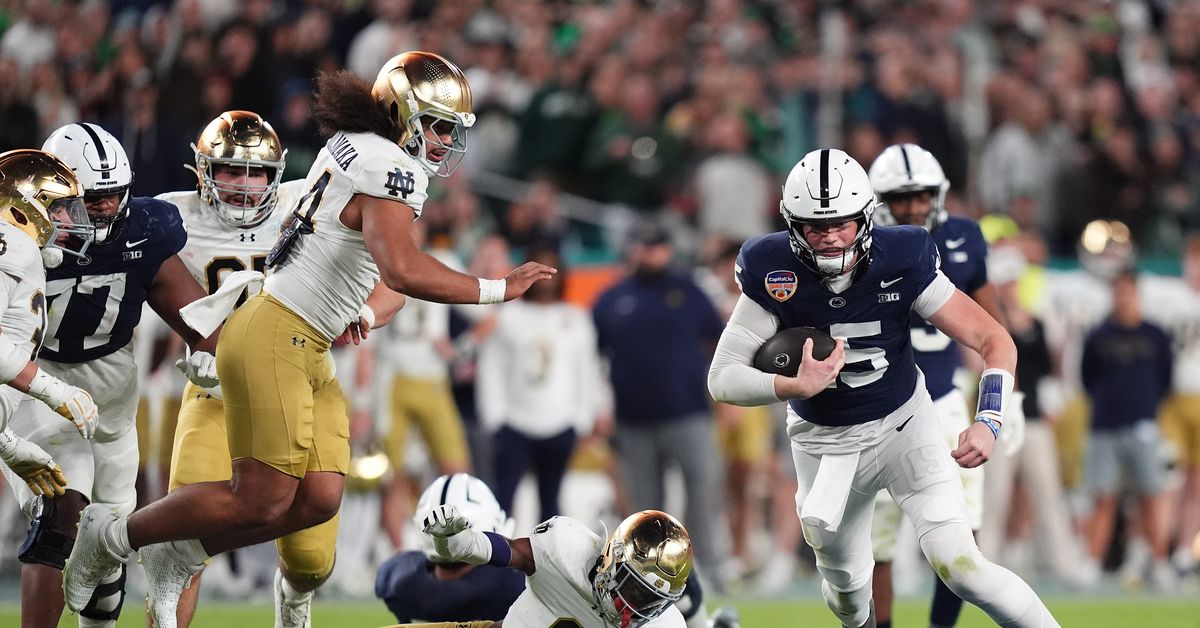

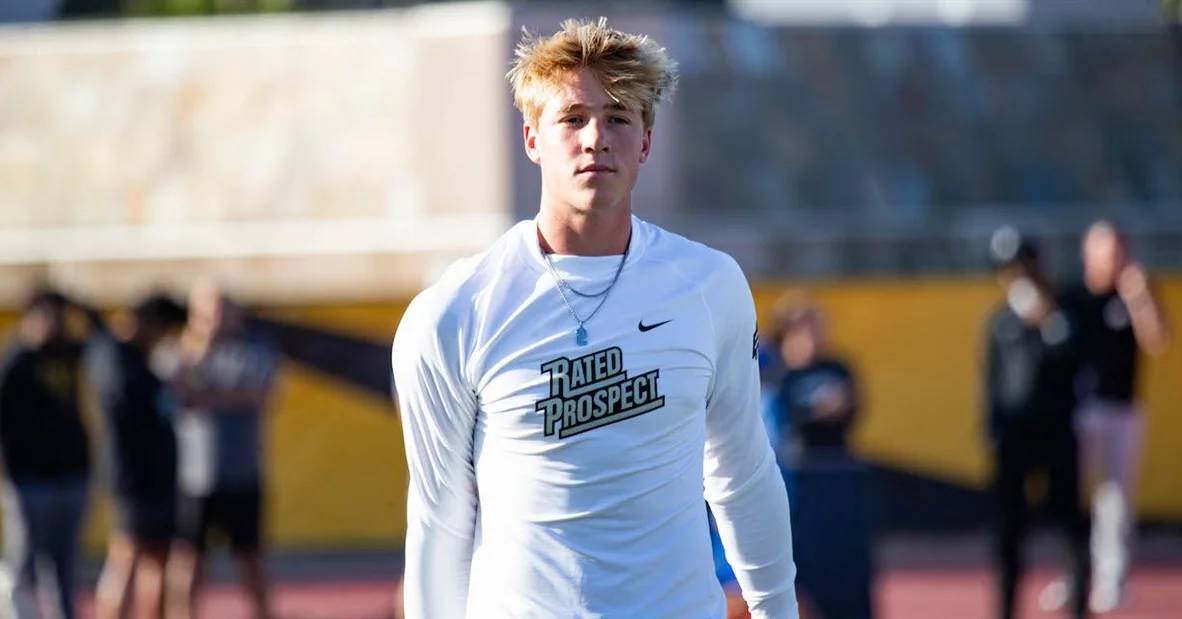
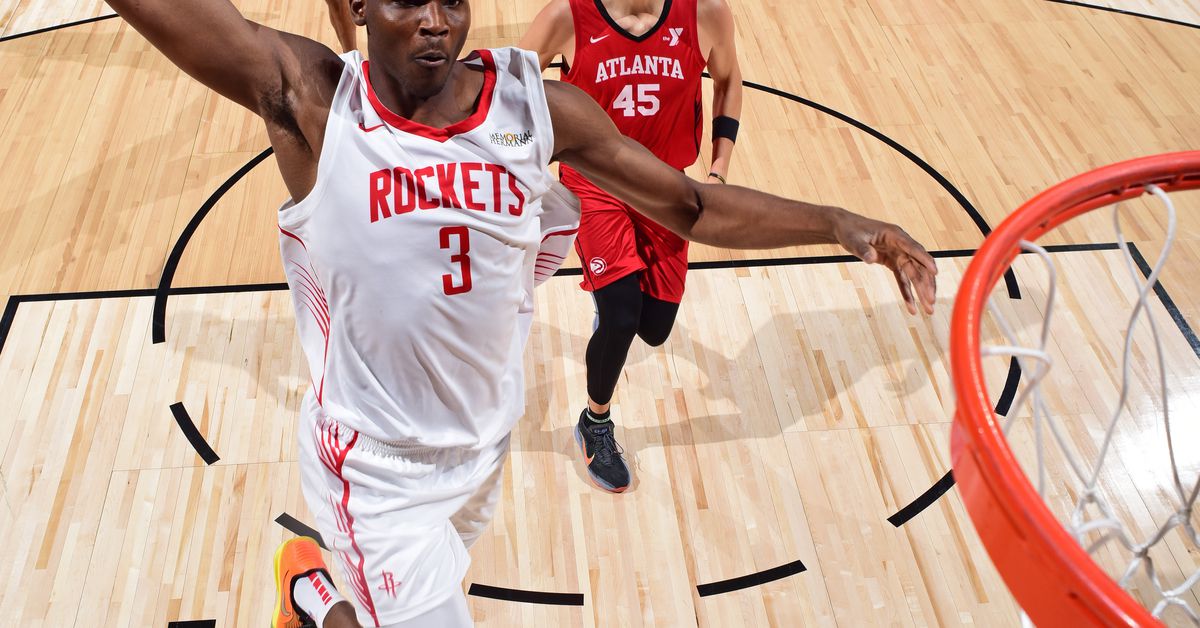
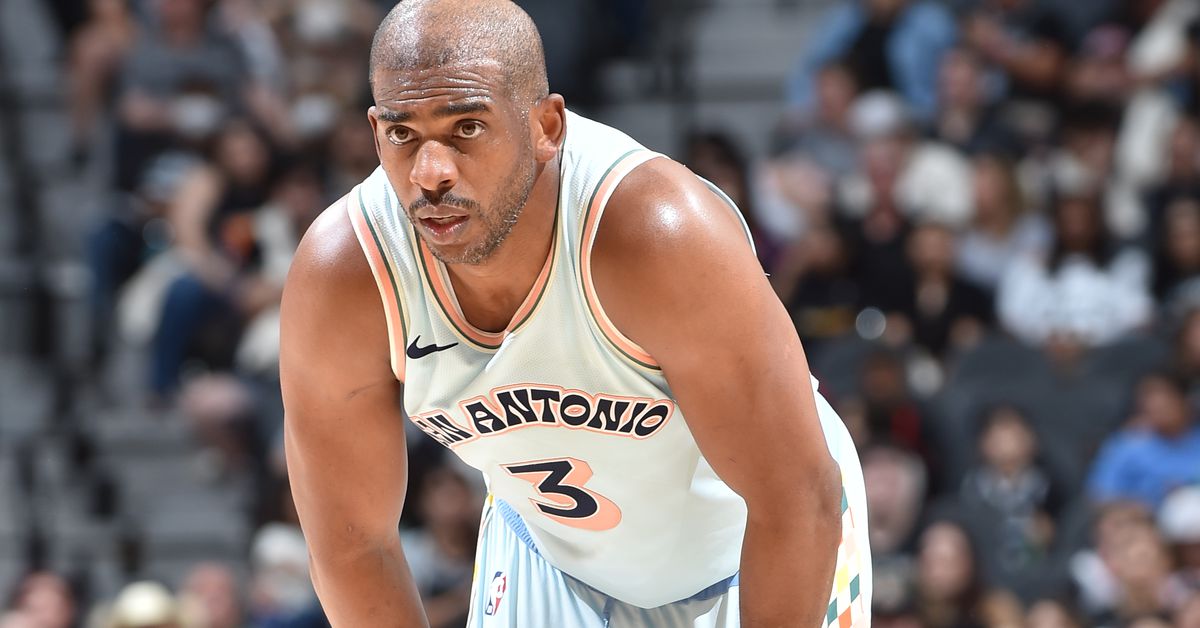


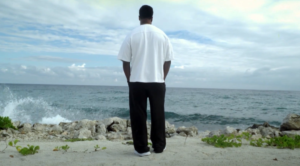







Post Comment